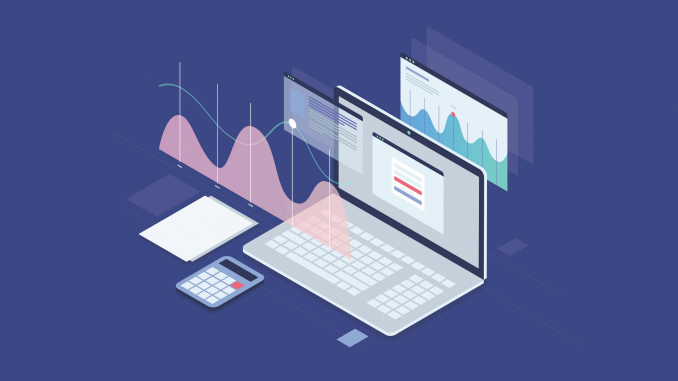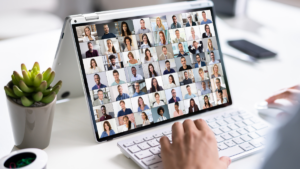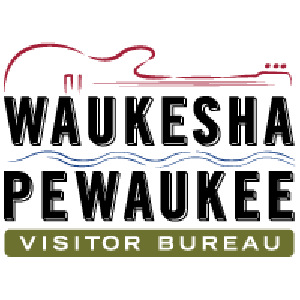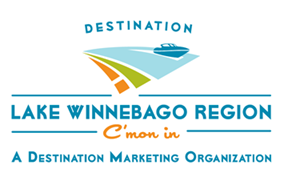The Power of Data-Driven Events
04/04/2019
By Amy Wunderlin
Chances are every time you host an event or meeting, you are collecting data. That online registration form? Yep, that’s a source of data. Your mobile app? There is data to be collected there, too. No matter the size of your event or meeting, today, there is more data being collected than ever before. But how you analyze and then put that data to work is still a work in progress for many event planners, marketers and sales teams.
In 2019, Corbin Ball, industry expert and owner of Corbin Ball & Co., expects the industry to make serious headway in the standardization of data analytics and management, as mobile event apps, specifically, enable an explosion of on-site data collection.
“Now that we have the tools, let’s process it,” Ball says. “Data points are being collected everywhere, which provide a very rich understanding of attendees, and all those things can now be measured.”
How to Collect Data
In addition to mobile event apps, data is being collected in both simple and complex ways.
Brian Friedman, vice president of digital innovation at Aventri, a company offering cloud-based events management software, says there are essentially two levels of data collection: interactive and non-interactive.
Non-interactive data collection is something as simple as recording on pen and paper or scanning a QR code.
Interactive data collection utilizes more advanced technologies like near field communication (NFC), which is a method of wirelessly sharing information. Many smartphones and tablets have NFC and can interact with other wireless devices when in proximity. Friedman notes this technology can monitor attendees as they check in and out of sessions.
There are also passive interactive technologies like radio-frequency identification (RFID). RFID tags and smart labels are encoded with digital data that is captured via radio waves. This technology is often used to capture people walking in and out of rooms.
“This is convenient if you want to do more analytics throughout the event,” Friedman explains.
During a recent event in Las Vegas, a client of Aventri’s used attendance information to make real-time improvements. The client’s CEO spoke at back-to-back keynote sessions in rooms that could hold about 1,000 people. Aventri showed that they only had about 600 people in the room, giving the appearance of a half empty room and lackluster event. For the next session, the client removed about half the chairs, making the room feel much more crowded with fewer seats available, and then sent out notifications on the event’s mobile app reminding attendees that a keynote was coming up.
Advancements in Internet of Things (IoT) devices enable the use of Bluetooth beacons, which are used to collect attendee records. Each attendee is assigned an ID that is also assigned to the beacon. When an attendee is within the beacon’s range of about 30 feet, it sends a signal of where the attendee is and for how long. Friedman says they are typically placed anywhere the organizer wants to capture activity such as at a booth or table.
“IoT is the intersection of mobile and capturing all that data on the cloud. Bluetooth beacons are a great example of that,” notes Friedman. “We’ve gone from events with no data collection at all, to events that have data collection where the data isn’t processed for weeks, to leveraging the IoT to collect data that is available immediately.”
Capitalizing on Data Collection
Advances in technology have made data collection seem almost easy, but the practice of analyzing it and acting is still in the early stages. In fact, many planners still track event data on Excel spreadsheets, Ball says, and it will take time for them to transition.
“Event data collection is going to become fairly automated and commonplace, but we’re still in the building stages,” Ball says, adding that where the industry is seeing the most impact currently is at the marketing and sales level.
“Meetings are an essential part of marketing because attendees are now able to be better understood,” he explains. “The attendee journey can now be tracked, and that’s really important from a marketing standpoint.”
Marketers and sales teams are benefiting from the ability to track each attendee’s journey, gaining insight into their unique profile. Attendee information can be collected in the organizer’s CRM to create a record of attendee likes, dislikes and behaviors. This provides an opportunity for marketers to create a more personalized experience.
According to Friedman, marketers have three goals in mind when it comes to data capture:
- Personalization at the event to give attendees a more optimized journey
- Insights that can help them curate their content after an event
- Better understanding and guidance to help them get the most value of their event
“Marketing’s goal is to capture the value of the attendees and get more insight into what they are doing. That way they can keep the data from the event and plug it into their marketing system, and they can then target and personalize their campaigns. Through that they can upsell or determine if an attendee is a sales prospect,” Friedman adds.
Audience engagement experts Interactive Meeting Technology, for example, use games and activities to capture data. The Minneapolis, Minn., company links several kiosks together for these games and the data collected in those kiosks provides their clients with basic company information, such as the attendees’ photos from LinkedIn, their LinkedIn profile and other information about the lead.
“The booth staffers at a trade show can view all of this data in an app on their phone before they have a face-to-face conversation with the lead. After the conversation they can make notes about the conversation that can be saved for later,” explains Samuel J. Smith, managing director of Interactive Meeting Technology.
A Wisconsin safety and compliance company, for example, recently used a trivia game to capture leads, identify marketing next steps and educate people on compliance. The data from the game helped this compliance company develop a post-event communications plan to reinforce key messages via video, blog posts and more, Smith says.
Another Minnesota medical device marketing team used a very simple trivia game with questions tied to learning objectives to help them understand whether their key opinion leaders were actually absorbing the content. “The data showed that the attendees did not understand one of the learning objectives. The client used that insight to make a small change during the event,” Smith explains.
These types of insights are also valuable to understanding your ROI, which ultimately is what event planning is all about. According to Friedman, marketers spend 10-30 percent of their budgets on events, which typically account for about 10 percent of their annual revenue. Data analytics enable them to tie a sale back to influence at an event. For example, tracking that an attendee talked to a salesperson or attended a session, which ultimately converted into a sale.
Organizers also can use event data to entice sponsors. They can show current sponsors the value gained from the event in real-time to encourage them to sign up again the following year. Friedman adds that organizers also use data internally to collect information about what employees are interested in and engaging in.
“This can help them improve their training between events. They can also motivate their team and improve their brand messaging,” he says.
Over the next few years, experts predict this level of analysis will trickle down to the event planners themselves, who will also benefit from data to predict, prescribe, learn and understand. This information can help them set up effective events, and data collected in real-time can help track an event’s success as it is taking place. Event planners can even make corrections during events.
Data Integration
Before meeting organizers and planners can start making recommendations and calculations, Friedman notes, they need data accessibility. There are many software platforms that enable organizers to integrate data from multiple sources into one platform but getting started can be overwhelming.
Friedman says when Aventri brings on new clients, they start by asking the company to identify their key performance indicators (KPI)—or its one metric for success.
“It’s all about asking the right questions, and not focusing on too many things,” he adds.
Once you’ve identified an area of focus, Friedman says you can begin to identify where you are at and track daily how you are doing.
“It’s about starting simple and understanding the value of one or two metrics, and then from there, when your team is more familiar with the system, you can start asking more questions and layering on more data,” he concludes.











